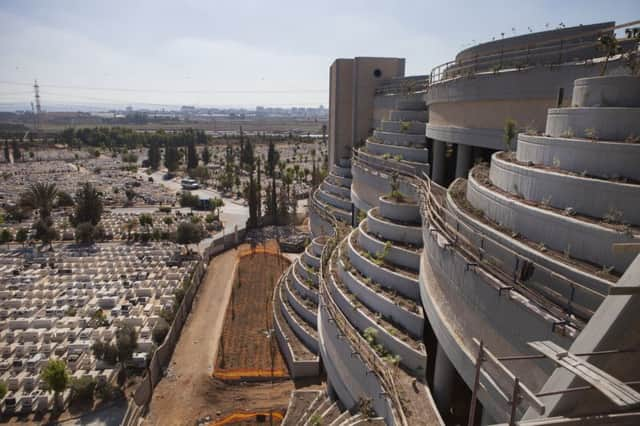Israel leads the way with vertical burial solutions


Israel is at the forefront of a global movement in vertical cemeteries in densely populated countries. They are now the default option for the recently departed in the Holy Land.
Tuvia Sagiv, an architect who specialises in dense burial design, said: “It’s unreasonable that we will live one on top of the other in tall apartment buildings and then die in villas. If we have already agreed to live one on top of the other, then we can die one on top of the other.”
Advertisement
Hide AdAdvertisement
Hide AdThe Yarkon Cemetery on the outskirts of Tel Aviv has been his flagship project. Its traditional burial grounds are at near capacity with 110,000 graves across 150 acres. But thanks to 30 planned vertical structures, the cemetery will be able to provide 250,000 more graves without gobbling up any more land, providing 25 years of breathing space. Cemetery overcrowding presents a challenge the world over, particularly in cities and among religions that forbid cremation.
The world’s tallest existing cemetery is the 32-storey Memorial Necropole Ecumenica in Santos, Brazil. In Tokyo, the Kouanji is a six-story Buddhist temple where visitors use a swipe card to have the remains of their loved ones brought to them from vaults via a conveyer belt system. In Mexico City, a project named the Tower for the Dead has been proposed: a vertical necropolis and an 820-foot-deep subterranean complex.But only in Israel does the phenomenon appear to be a government-backed master plan. Aside from those who have already purchased their future plots, individual outdoor graves are no longer offered to the families of the 35,000 Israelis who die each year. The first space-saving option is to put graves on top of each other, separated by a concrete divider, and have a shared headstone. This is common among couples and families, and every new pit dug in Israel has room for at least two graves in it.
The second option is stacking the dead above ground into niches built into walls. The third is a high-rise building where each floor resembles a traditional cemetery.
The Jewish burial ritual is based on the passage in Genesis: “For dust you are and to dust you shall return.” Jewish law stipulates that all bodies be buried separately on a layer of dust and earth.
Yaakov Ruza, the rabbi of the Tel Aviv burial society, said the new forms of burial have been endorsed by leading Jewish ultra-Orthodox figures.
The towers have pipes filled with dirt inside their columns so that each layer is still connected to the ground. In many ways the new burials represent a return to the ancient practice of burying in caves and catacombs.
Ruza said: “Once they used to build a cave into a mountain. Now we are taking these artificial caves and turning them into a mountain.”